Suburbans Origins
The idea for the Chevrolet Suburban Carryall was born out of a need for a heavier duty, truck based wagon. Through the early 1930s, most manufacturers offered sedan based wagons for professional use. Open models with windows and rear seating were known as "station" wagons, and were used to ferry passengers and their cargo to and from train "stations" and in some cases boat docks, hence the term, station wagon. Enclosed sedan models, typically fitted without rear seats, were known as sedan deliveries.
Much of the bodywork for these early vehicles often consisted of wood sides and canvas tops, and while they were versatile, their car-based chassis and damage-prone bodies were compromises. Chevrolet began experimenting with an all-steel wagon body mounted on a commercial truck chassis in the early 1930s, which gave way to the Suburban Carryall in 1935.
The base price of the original, eight-passenger Suburban was about $675, or the equivalent of about $15,450 in 2024 dollars although the 1935 model didn't come with air conditioning, Satellite GPS, anti-lock brakes, a six-speed transmission or keyless entry. In fact, a radio, heater, clock and even a rear bumper were extra-cost options.
After the introduction of the Suburban, car-based commercial vehicles, including sedan deliveries, remained in production, but the heavy-duty chassis of the Suburban increasingly found favor with professional customers. In the post-World War II years, its popularity with private customers who appreciated its uncompromising capabilities increased steadily.
The Chevrolet Suburban hit the mainstream in the early 1990s, with the overall popularity of more luxurious utility vehicles. But while many customers were new to the Suburban then, it had garnered a legion of longtime owners who had purchased multiple examples over the decades using them to haul Little League teams and their equipment, tow a boat, a camper, a horse trailer or seat a work crew on the way to a job site.
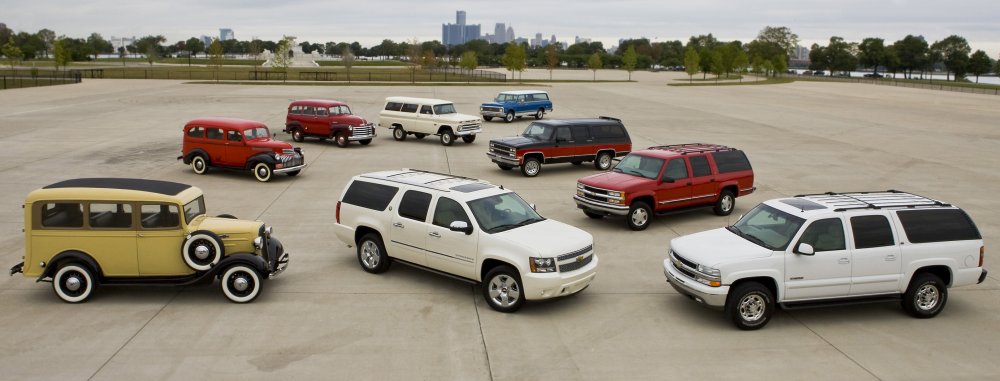
Chevrolet Suburban At 80: A Historical Look At An American Icon
In 1935, the United States' population was a little more than 127 million. Franklin D. Roosevelt was President, a first-class stamp cost three cents, Technicolor was introduced to motion pictures and the Detroit Tigers defeated the Chicago Cubs in a tough World Series.
It was also the birth year of three world famous monikers that are still with us today. Zippo lighters, Airstream Campers and the Chevrolet Suburban.
In the nearly nine decades since its introduction, the Suburban has become an icon and the longest-running model in the history of the automotive industry.
In fact, Suburban is the first vehicle to reach 89 years of production and is still one of the best selling models in history. Times have changed, but the Suburban remains a fixture in the industry for private and professional customers who need truck-like towing capability with maximum passenger and cargo space,' said Jim Campbell, Chevrolet general manager. 'The Suburban's core capabilities and dependability have remained constant for more than eight decades and generations of people know that a Suburban will haul people and their gear.'
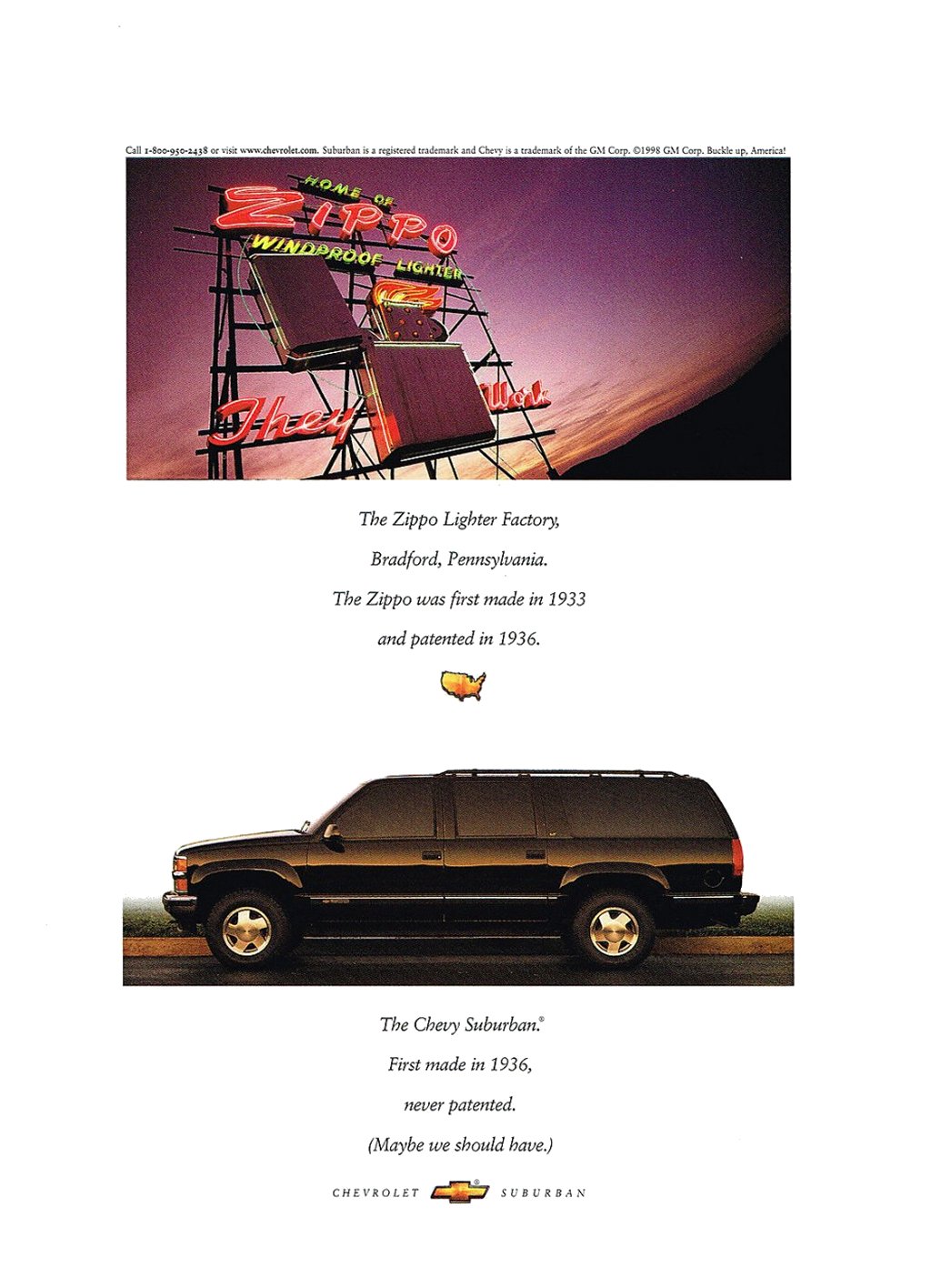
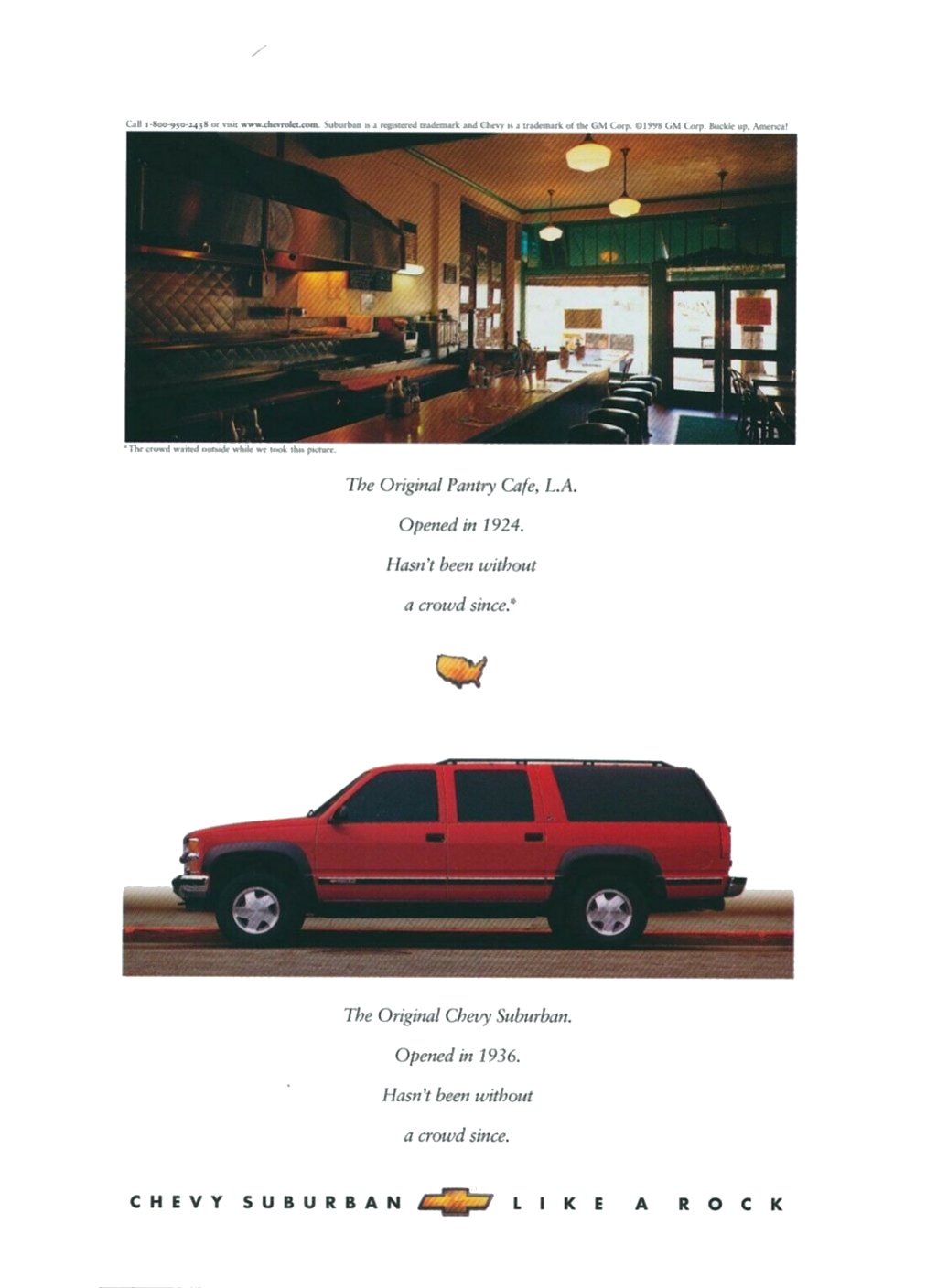
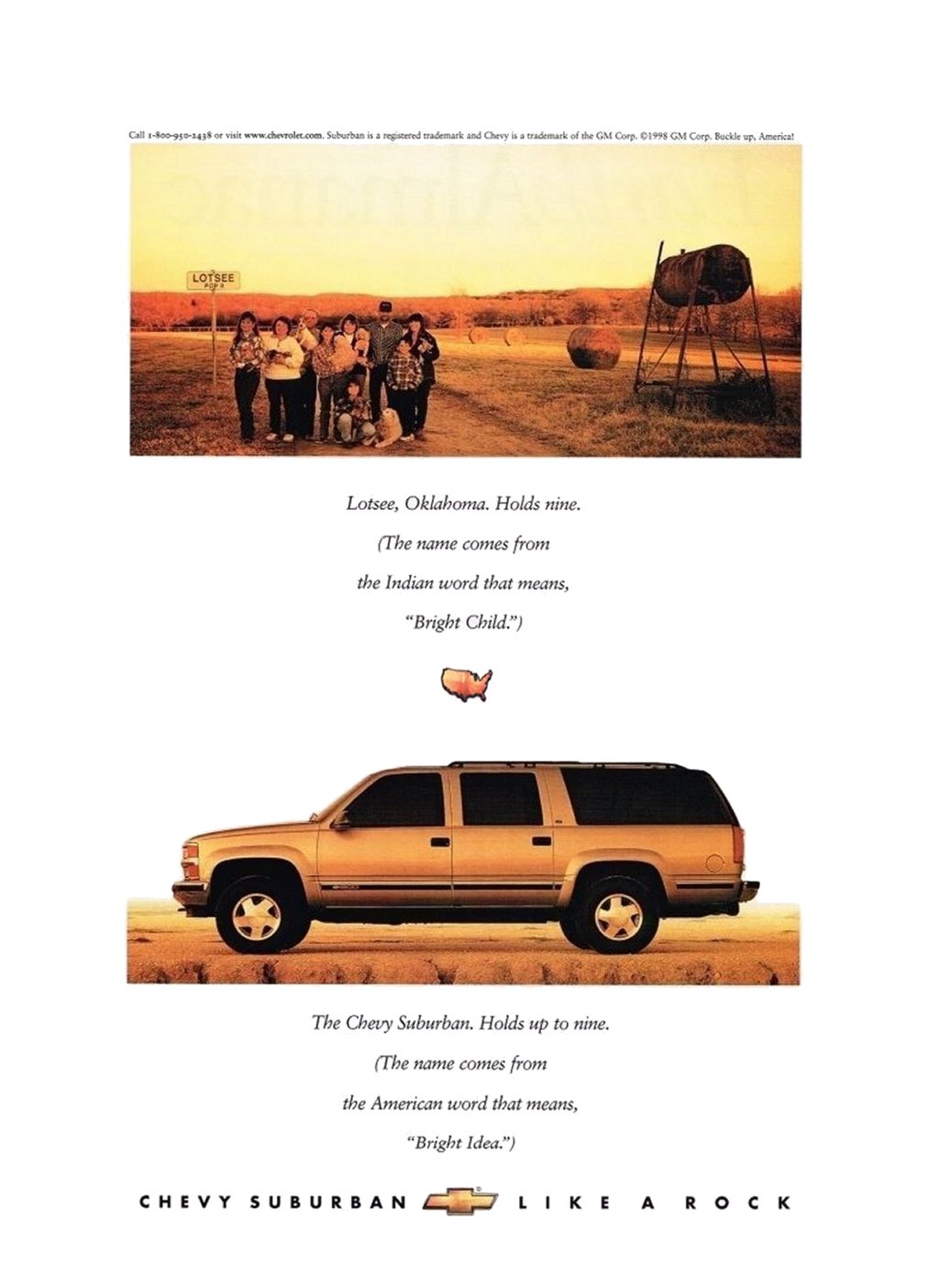
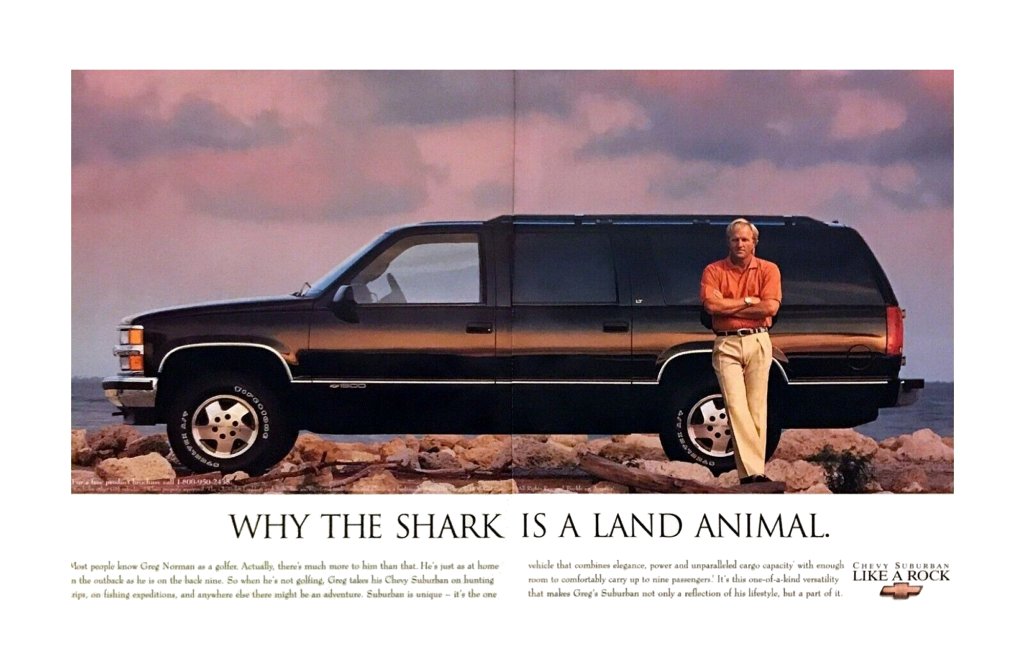
The Suburban wasn't just a significant model for Chevrolet, it was an important vehicle for the car industry as a whole. A tough, no-nonsense load carrier featuring a station wagon body on the chassis of a truck. Actually called the Suburban Carryall for it could pretty much carry anything its origins could be traced back to 1933 and a wooden eight-seater body on half ton truck frame, intended for National Guard and Civilian Conservation Corps units. When made available to the public, it gained an all-metal body fitted with either rear panel doors or a tailgate. They were creating a crossover between a car and a truck, that gave birth to what is now the longest continuously running model name to be used on a motor vehicle.
Chevrolet introduced in 1935 the "Suburban Carryall", a vehicle that changed the automobile market. With a focus on functionality, the foundation of the new concept was "to carry all". At long last, the whole family was able to find sufficient space in one car and preferably the fishing equipment too. To build this automobile, engineers used a conventional truck chassis, but instead of installing a loading floor, as in the case of pick-ups, they had designed a generous passenger compartment in which up to 8 persons found sufficient seating space on three rows of seats and a very sound 90 horse- power engine provided the necessary power to "carry" it all.

Note: This project is simply a hobby for me.
While I strive for as much accuracy as possible and make every effort to use
GM information in as many cases as I can, I do not represent my work as an authority.
If you see an inaccuracy and you have the documentation to correct it,
please feel free to contact me at: cmlangdale@gmail.com
Thank you.
Chevrolet has used several well-known slogans, but a definitive chronological list is difficult to pin down from the sources. Some notable slogans include "See the U.S.A. In Your Chevrolet" (1950s1960s), "Baseball, Hot Dogs, Apple Pie & Chevrolet" (1975), "The Heartbeat of America" (19871994), and "Find New Roads" (20132023). The current slogan is "Together Let's Drive" (2023-Present).
Here's a more detailed look at some of Chevrolet's slogans:
"See the U.S.A. In Your Chevrolet"
(19491960s): A popular slogan from the mid-20th century that promoted travel in a Chevrolet.
"Building a Better Way to See the USA"
(early 1970s): This slogan continued the theme of travel but with a slight emphasis on improvement.
"Baseball, Hot Dogs, Apple Pie & Chevrolet"
(1975, 2006): A nostalgic and patriotic slogan that associated Chevrolet with quintessential American symbols.
"The Heartbeat of America"
(19871994): This widely recognized slogan aimed to capture the pulse and energy of America, with Chevrolet at its center.
"Like a Rock"
(19912004): A slogan specifically used for Chevrolet trucks, emphasizing their durability and strength.
"An American Revolution"
(20042009): This slogan re-branded Chevrolet as a forward-thinking and innovative company.
"Chevy Runs Deep"
(20102013): A slogan that followed "An American Revolution" with a focus on heritage and connection.
"Find New Roads"
(20132023): This was a long-running tagline focused on innovation and the future of driving.
"Together Let's Drive"
(2023Present): Chevrolet's current slogan emphasizes unity and collective progress.
This applies to all pages associated with Langdalefamily.com:
Warning--any person and/or institution and/or Agent and/or Agency of any governmental, public or private structure including but not limited to The United States Federal Government or any Government also using or monitoring/using this website or any of its associated websites, you DO NOT have my permission to utilize any of my information, pictures, messages or posts, past, present and future nor any of the content contained herein including, but not limited to my photos, and/ or the art posted on this website. You are hereby notified that you are strictly prohibited from disclosing, copying, distributing, disseminating, or taking any other action against me with regard to this profile and the contents herein. The foregoing prohibitions also apply to your employee(s), agent(s), student(s) or any personnel under your direction or control. The contents of this website are private and legally privileged and confidential information, and the violation of my personal privacy is punishable by law.
ALL RIGHTS RESERVED
